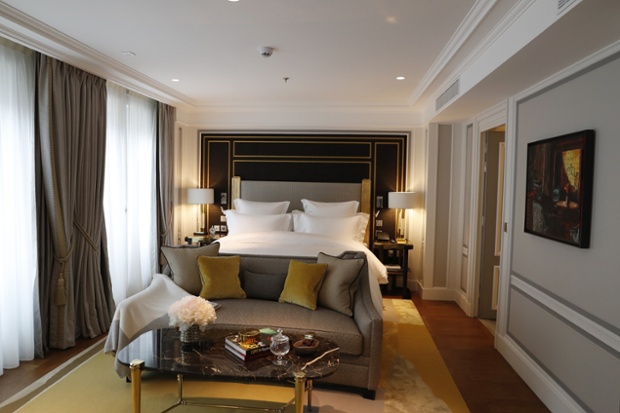London’s Bankside Hotel provides guests with Guatemalan worry dolls, telling them to whisper anxieties to the dolls before bed, a trick meant to help the guests rest better. As luxury increasingly intersects with wellness, hospitality providers are paying more attention to helping guests sleep in ways both big and small.
“It’s no secret that guests have always expected a quality sleep experience when it comes to choosing accommodations,” Dan Daftari, founder of Hotel Residences and co-founder of the pillow company SleepCoCo says. “What guests define as a quality sleep experience, however, is changing. With sleep at the forefront of the recent health and wellness craze, guests are coming to expect more than just a decent mattress and some extra standard pillows.”
“Guests are beginning to expect more innovation to help them get that great night of sleep,” Daftari continues. “Things like pillow menus are becoming more and more prevalent, with some hotels going as far as offering things like aroma therapy upgrades to help you relax into a blissful slumber.”
The focus on sleep is a natural evolution for hotels, Barak Hirschowitz, president of the International Luxury Hotel Association, told the Washington Post. “Great luxury hotels since the late 1800s have always focused on innovation and tiny details. Cesar Ritz, considered by many the grandfather of the modern luxury hotel, was the first to introduce a bathroom in every room in 1893 at the Grand Hotel in Rome. Today, you wouldn’t imagine a hotel room without a bathroom, but back then it was a small detail that changed the industry.”
A recent study by IHG found that many travelers struggle with their sleep schedule, with those traveling for business losing 58 minutes of sleep per night while away from home. Such travelers average just over five hours of sleep per night due to the unfamiliar environment and work schedule.
Hotels are taking several steps to address this challenge, such as pillow menus, climate control and remote-control room lighting. “In some cases, hotels will make note of pillow preferences and make sure to have the right pillow ready for your next stay,” Daftari notes. “Guests are increasingly becoming discerning in their pillow preferences.”
Airport hotels face a special challenge when it comes to helping guests sleep due to aircraft noise nearby. The new TWA Hotel at John F. Kennedy International Airport in New York includes windows that are more than four inches thick to keep noise out, according to Hotel News Now. But the innovations go beyond construction. Hilton’s Innovation Gallery has tested speakers flooding rooms with white noise and art that absorbs sound in addition to a noise-cancelling device — all innovations geared toward helping guests rest.
“The rise of wellness travel has had a strong impact on hotels’ approach to services and room design. While providing a quality sleep experience for guests has always been of utmost importance for hotel operators, there has been little to no innovation in this area over the years,” Daftari says.
Wellness travelers are becoming more specific about what they want out of their stays, requesting everything from upgraded mattress and pillows to high-end toiletries and even aroma-therapy upgrades and in-room spa treatments.
“Room design, however, has been simplified in some respects to reflect the shift toward wellness travel and to help give a sense of tranquility,” Daftari says. “Natural products such as wood floors help to ground spaces, and calming tones and other natural elements help to further extend the mood.”
Related stories:
- Beer-centric travel is on the rise
- Workplaces, hotels see bleisure as a growing norm for business travel
- Hotels entice guests with fresh winter menus, activities
- Spas latch onto natural remedies, including CBD
__________________________________________________
If you enjoyed this article, sign up for ILHA SmartBrief, ISPA Smartbrief or SmartBrief for the Travel Professional to get news like this in your inbox, or check out all of SmartBrief’s food and travel newsletters as we offer more than 30 newsletters covering the food and travel industries from restaurants, food retail and food manufacturing to business travel, the airline and hotel industries and gaming.
